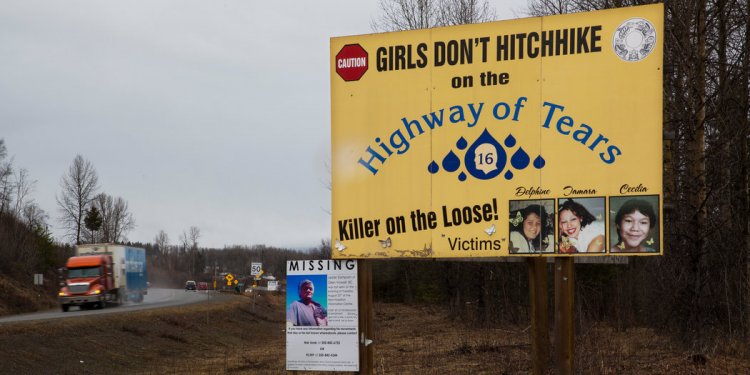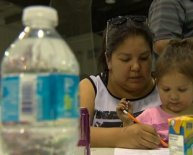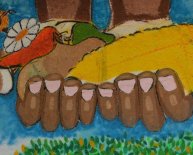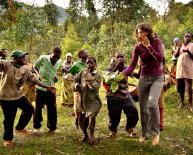
Who are the Aboriginal?
A study introduced by the RCMP earlier in the day this season marks the first time that police in Canada have actually tried, in the national amount, to spot exactly how many First Nations, Inuit or Métis women and girls have now been murdered or have gone lacking.
According to the report, 1, 017 females and girls defined as Indigenous were murdered between 1980 and 2012—a homicide rate approximately 4.5 times greater than that other women in Canada.
Also, the report states that at the time of November 2013, at least 105 native women and girls stayed missing under dubious circumstances or for undetermined factors.
These appalling data tend to be consistent with past estimates from sources eg Statistics Canada having very long pointed to a significantly disproportionate standard of violence against that very first Nations, Inuit and Métis females and girls. The newest numbers in addition underline exactly what native females and advocacy companies have long already been saying–that this assault needs a particular and concerted response from authorities and all sorts of levels of society.
The RCMP’s launch of official, nationwide authorities data verifying these past estimates is a vital and welcome action because such numbers are critical to inform and mobilize authorities and general public response.
Unfortuitously, in the hands of some government officials and news commentators, the new RCMP data have grown to be, maybe not a source of clarity and a reference to use it, but a justification for misrepresenting the fact of native women’s everyday lives and a reason for continued inaction.
a partial photo
The RCMP report will not inform us every thing we need to learn about violence against Indigenous ladies. The release of the report is certainly not an alternative for a national inquiry.
The RCMP report will not mirror the sounds of affected people and communities. Nor does it provide an automobile for the consideration and implementation of the solutions they have identified. As well as as a statistical image of missing and murdered native women, the RCMP report has important spaces that need to be recognized.
In its statistics on homicide, the RCMP report only includes instances when the initial investigating police has actually determined that a murder has taken location. The report explicitly doesn't include unexplained and suspicious deaths.
Amnesty’s own studies have raised problems that fatalities of native ladies and women are not always completely and properly examined and therefore because of this some murders of Indigenous women and women was incorrectly classified as accidental deaths.
In addition, police in Canada never consistently capture the Indigenous identity of victims of criminal activity. Statistics Canada reports that in 2009, including, police recorded neglected to note if the victims of criminal activity were Aboriginal or non-Aboriginal in 384 out-of 610 homicides. Some sufferers of criminal activity are being inaccurately defined as non-Aboriginal because police have not had proper training on the reason why precise recognition is essential and how it is is determined.
The RCMP report acknowledges the unreliability of current police practices of determining Indigenous identity. The report claims that a file review, done over a period of almost a year, established the Aboriginal or non-Aboriginal identity of all of the but 95 homicide sufferers whose identity once was recorded as “unknown.” The RCMP would not review files to ascertain whether native ladies have been inaccurately recorded as non-Indigenous.
The RCMP report also doesn't distinguish between First countries, Inuit and Métis women and women. As a result, it generally does not provide any information on if the homicide price is similar or differs among these teams. The report provides some data in the lives associated with victims. The nature of several of those data—such as reputation for unlawful drug use or participation in unlawful activities—suggests an inappropriate concentrate on the feasible role of the victim’s very own actions and behaviours.
The report doesn't feature any information on how most women and women previously looked for assistance or defense against the authorities or service companies or perhaps the response they got.
Even though report breaks down the statistics in accordance with some possibly significant factors—such as whether homicides were committed beyond your residence (27% for Indigenous ladies compared to 20% for non-Indigenous) —it does not provide numbers for homicides on and off book.
The report cannot identify how many for the perpetrators associated with the criminal activity had been Indigenous and how numerous were non-Indigenous. The report also doesn't supply any info on the numbers of perpetrators additionally the role of other people in helping perform or cover-up the crime.
However, the report does nonetheless offer important information on relationship associated with the perpetrators into the victims, recommending considerable differences in the threats faced by native and non-Indigenous women.
Violence against native ladies must certanly be understood within a personal context
Previous research, including reports by the local Women’s Association of Canada and Amnesty International’s own study, tv show that assault against native females and girls is pervading, occurring in the house plus the roads of Canadian places, hence the perpetrators consist of Indigenous and non-Indigenous guys alike.
Nothing into the RCMP report changes this conclusion.
Almost all murders are dedicated by somebody known to the sufferer. This is certainly real for native and non-Indigenous women alike.
But there was at least one significant difference revealed by the RCMP report.
Regarding Aboriginal ladies, partners, family members along with other intimates account fully for 62% of homicides, versus 74percent of murders of all of the various other women. The real difference is largely taken into account by better amount of murders of Indigenous females and women by folks law enforcement categorize as “acquaintances”, including pals, co-workers, neighbours, authority figures alongside folks known to, not personal because of the target.
Inside 22 12 months period included in the RCMP, associates had been found to be responsible for the murder of greater than 300 Indigenous females and women in Canada.
The rate of homicide by associates ended up being 7 times better for Indigenous women and girls compared to all the women in Canada.
Through the exact same duration, the RCMP found that strangers had been accountable for the murder of 81 Aboriginal ladies and girls.Clearly, domestic and household assault are important issues that must be addressed in almost any significant national technique to deal with physical violence against native females and girls.

















